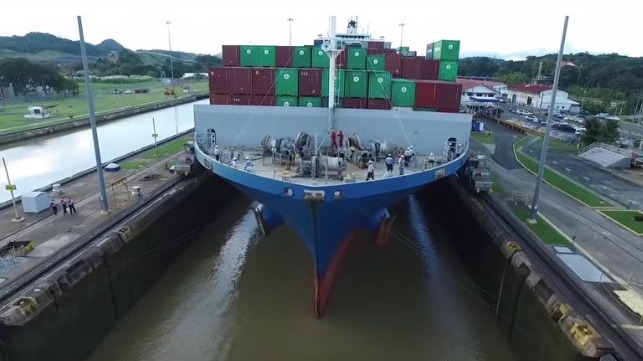MAREX reports on the new record set in Panama, again!!
The Panama Canal set a new monthly tonnage record of 38.1 million tons (PC/UMS) after facilitating the transit of 1,231 vessels in May 2018.
This is the third time a record has been set since the inauguration of the Expanded Canal. The previous record was established in January 2017, when 1,260 vessels transited 36.1 million tons (PC/UMS) through the waterway, just a month after setting the record with 35.4 million tons (PC/UMS) transited by 1,166 vessels in December 2016.
The container ship segment contributed highest tonnage (36 percent), breaking its segment record with 13.8 million tons (PC/UMS) transited by 229 vessels.
As a result of the increased cargo capacity offered by the Neopanamax locks, inaugurated almost two years ago, the Expanded Canal has received around 3,800 Neopanamax vessels, around 50 percent of which are container ships.
The Panama Canal has also emerged as an important link in the global LNG supply chain. On April 30, 2018, the Panama Canal welcomed the inaugural transit of the LNG Sakura as it carried the first LNG shipment from the Dominion Cove Point terminal in the U.S. to Japan. The transit marked the beginning of a new LNG commercial route between the U.S. and Asia from the recently inaugurated Dominion Cove Point terminal in Maryland, the second U.S. LNG export terminal to come online after Sabine Pass began operations in 2016.
Some of the other recent milestones reached by the Expanded Canal have been:
March 1: MSC Caterina became the 3,000th Neopanamax vessel to transit the Expanded Canal.
March 7: The Panama Canal added an additional reservation slot for Neopanamax vessels, raising the total available from seven to eight per day.
April 17: The Panama Canal facilitated the transit of three LNG vessels in one day: Clean Ocean, Gaslog Gibraltar and Gaslog Hong Kong.
May 14: The Panama Canal facilitated the transit of its largest cruise ship to date, the Norwegian Bliss, weighing more than 168,000 gross tons and carrying the capacity for almost 5,000 passengers.
